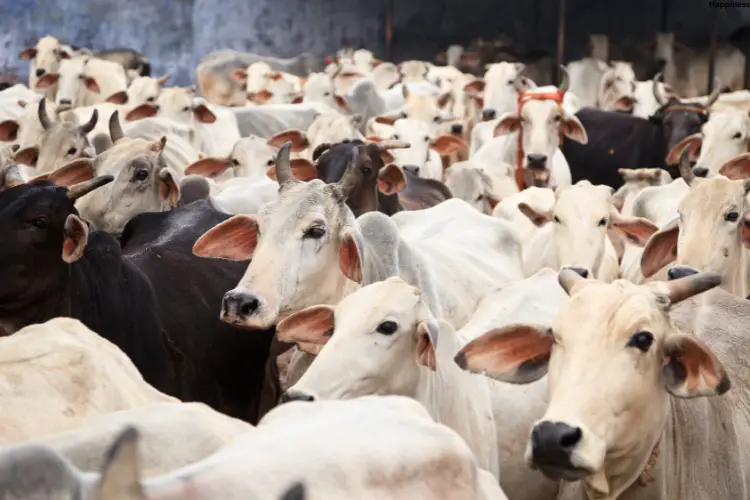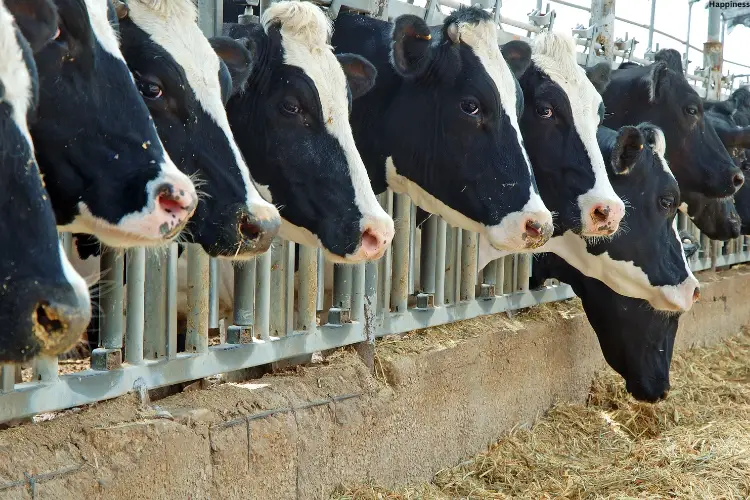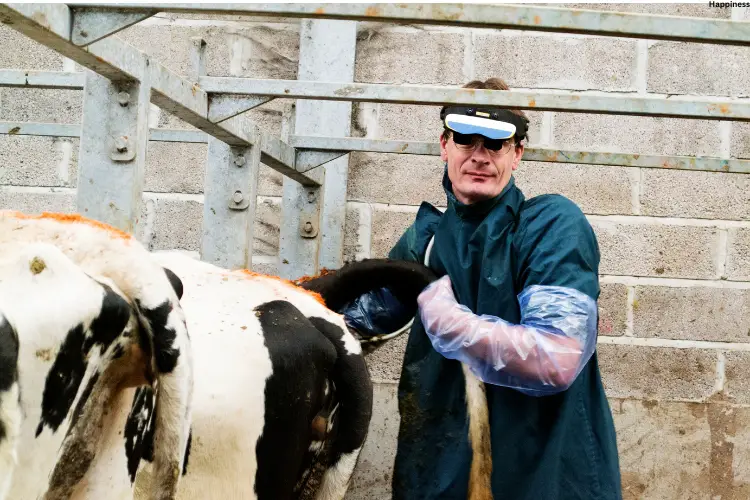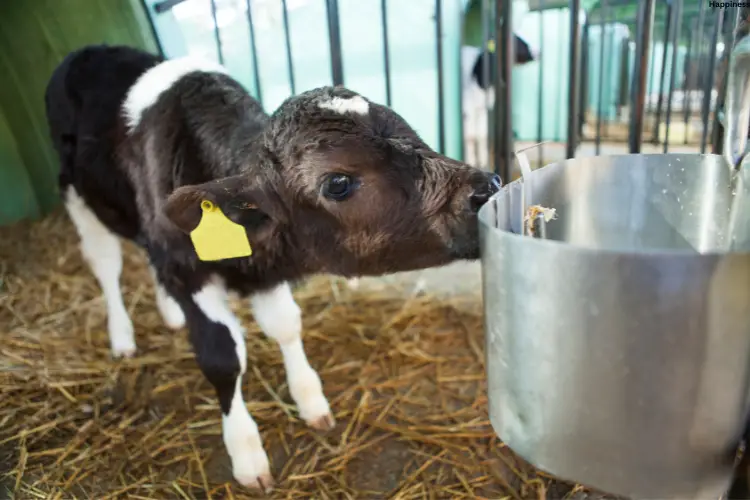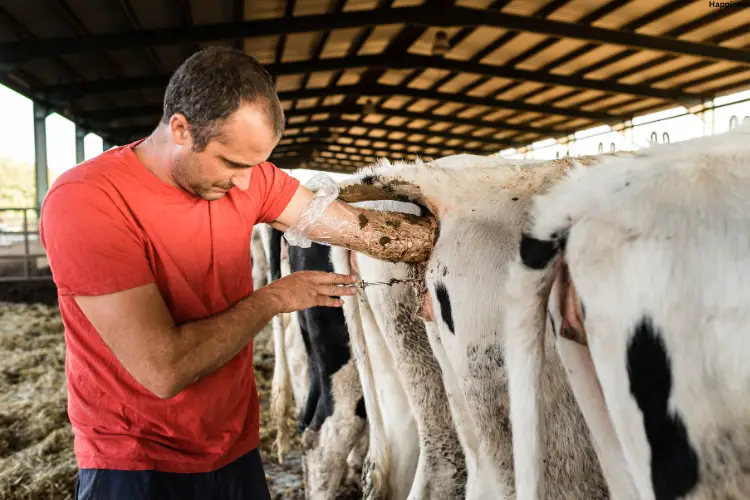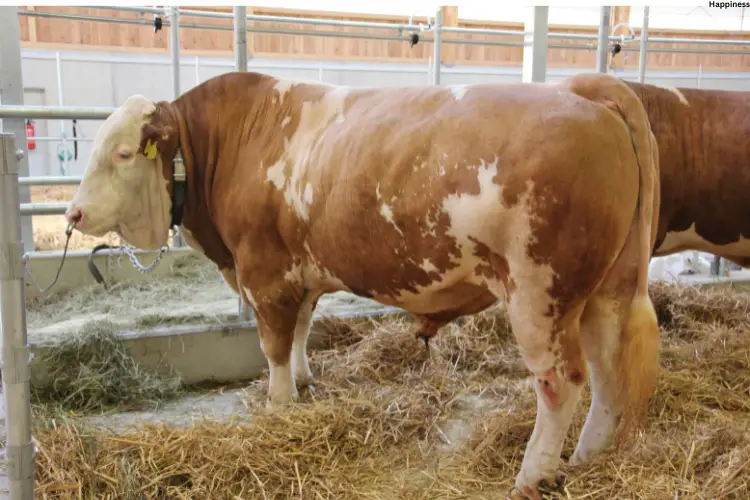Effective reproductive management is the foundation of a successful and profitable cow-calf operation. The ability of a cow herd to consistently breed, carry pregnancies to term, and deliver healthy calves is crucial for maximizing productivity and profitability.
In this blog post, we will delve into the key aspects of reproductive management in a cow herd, providing you with the knowledge and strategies to optimize your herd’s reproductive performance.
Understanding the Reproductive Cycle of Cows
1. Estrous Cycle
The estrous cycle in cows is a recurring physiological process that prepares the female reproductive system for potential conception. This cycle typically lasts 21 to 23 days and is characterized by changes in hormone levels, follicular development, and the receptiveness of the cow to mating.
Phases of the Estrous Cycle
- Proestrus: This phase is marked by the development of a mature follicle and the increasing production of estrogen.
- Estrus: During this phase, the cow exhibits behavioral signs of heat, such as standing to be mounted by other cows, increased restlessness, and decreased appetite.
- Metestrus: Following the estrous period, the corpus luteum (CL) forms on the ovary, leading to a rise in progesterone levels.
- Diestrus: The CL continues to secrete progesterone, maintaining the potential for pregnancy.
Understanding the stages of the estrous cycle is crucial for effective breeding management and the implementation of reproductive technologies, such as synchronization protocols and artificial insemination.
2. Factors Affecting Reproductive Efficiency
- Nutrition: Adequate nutrition, including energy, protein, vitamins, and minerals, is essential for maintaining optimal reproductive function in cows.
- Body Condition Score (BCS): Maintaining cows at an appropriate BCS (typically between 5 and 7 on a 9-point scale) is crucial for optimal reproductive performance.
- Breed and Genetics: Certain breeds and genetic lines may be predisposed to better reproductive characteristics, such as earlier puberty, higher conception rates, and longer productive lifespans.
- Age and Parity: Younger and older cows, as well as cows with a higher number of calves, may have decreased reproductive efficiency.
- Herd Health: Diseases, parasites, and other health issues can negatively impact a cow’s reproductive performance.
- Environmental Factors: Factors such as temperature, humidity, and photoperiod (day length) can influence a cow’s reproductive function.
Understanding these factors and their interplay is essential for developing a comprehensive reproductive management plan for your cow herd.
Reproductive Management Strategies
1. Breeding Season Management
Establishing a well-defined breeding season is a fundamental aspect of reproductive management. This involves:
- Determining the appropriate breeding season length (typically 60-90 days) based on your climate and production goals.
- Synchronizing the breeding season to optimize calf uniformity and streamline management practices.
- Identifying and addressing any pre-breeding issues, such as BCS, herd health, and bull fertility.
2. Estrus Detection and Breeding
Accurate detection of estrus, or heat, is crucial for successful breeding. This can be achieved through a combination of the following methods:
- Visual observation: Monitoring cows for behavioral signs of estrus, such as standing to be mounted, increased activity, and decreased appetite.
- Mounting activity: Using devices that detect when a cow is mounted by another, indicating the onset of estrus.
- Hormonal monitoring: Measuring changes in reproductive hormones, such as progesterone, to identify the optimal time for breeding.
Once estrus is detected, cows can be bred through natural service or artificial insemination (AI), depending on the specific needs and resources of your operation.
3. Pregnancy Diagnosis and Management
Evaluating the pregnancy status of your herd is essential for effective reproductive management. This can be done through the following methods:
- Rectal palpation: A veterinarian can perform this procedure to physically examine the reproductive tract and determine pregnancy status.
- Ultrasound: Using real-time ultrasound technology, a veterinarian can visualize the developing fetus and confirm pregnancy.
- Blood or milk testing: Laboratory analysis of blood or milk samples can detect pregnancy-specific hormones and proteins.
Pregnant cows require specialized management to support fetal development and ensure a healthy calving process. This includes monitoring body condition, providing appropriate nutrition, and addressing any health concerns.
4. Calving Management
The calving process is a critical stage in the reproductive cycle, and effective management is crucial for the survival and well-being of both the cow and the calf. This includes:
- Preparing a clean, safe calving environment.
- Monitoring the cow during the calving process and providing assistance when necessary.
- Ensuring the calf receives adequate colostrum and care during the first few hours of life.
- Identifying and addressing any postpartum health issues in the cow, such as retained placenta or metritis.
5. Reproductive Performance Evaluation
Regularly evaluating the reproductive performance of your cow herd is essential for identifying areas of improvement and implementing targeted management strategies. This can be done by tracking the following metrics:
- Calving rate: The percentage of cows that calve each year.
- Pregnancy rate: The percentage of cows that become pregnant during the breeding season.
- Calf crop percentage: The percentage of calves born relative to the number of cows exposed to breeding.
- Calving interval: The average number of days between consecutive calvings.
By analyzing these metrics and benchmarking your herd’s performance against industry standards, you can make informed decisions to optimize your reproductive management practices.
Reproductive Technologies and Strategies
1. Estrus Synchronization
Estrus synchronization protocols involve the use of hormones to manipulate the estrous cycle, allowing for more precise timing of breeding and improved breeding efficiency. This can be particularly useful for implementing artificial insemination programs or for improving reproductive performance in herds with extended calving seasons.
2. Artificial Insemination (AI)
Artificial insemination offers several advantages over natural breeding, including the ability to use genetically superior sires, improved disease control, and the potential for increased conception rates. Successful implementation of an AI program requires careful planning, proper employee training, and a well-executed breeding protocol.
3. Embryo Transfer
Embryo transfer technology allows for the collection of embryos from genetically superior female donors and the transfer of those embryos to recipient cows. This can be a valuable tool for accelerating genetic improvement and increasing the number of offspring from elite females.
4. Reproductive Tract Evaluation
Regular reproductive tract examinations, conducted by a veterinarian, can identify potential reproductive issues, such as uterine abnormalities, ovarian cysts, or other conditions that may impair fertility. This information can then be used to develop targeted management strategies to address these problems.
5. Bull Breeding Soundness Evaluation
Evaluating the breeding soundness of bulls is essential to ensure their fertility and ability to successfully breed cows. This includes a physical examination, assessment of semen quality, and evaluation of libido and mating ability.
Implementing a Comprehensive Reproductive Management Plan
Developing and implementing a comprehensive reproductive management plan is crucial for maximizing the productivity and profitability of your cow-calf operation. This plan should incorporate the following key elements:
- Goal Setting: Clearly define your production and reproductive goals, such as calving rate, weaning weight, and calving interval.
- Herd Assessment: Evaluate the current reproductive performance of your herd and identify areas for improvement.
- Nutrition and Body Condition Management: Ensure that your cows are receiving a balanced diet and maintain an optimal body condition score.
- Health and Disease Prevention: Implement a comprehensive herd health program to address any potential reproductive issues.
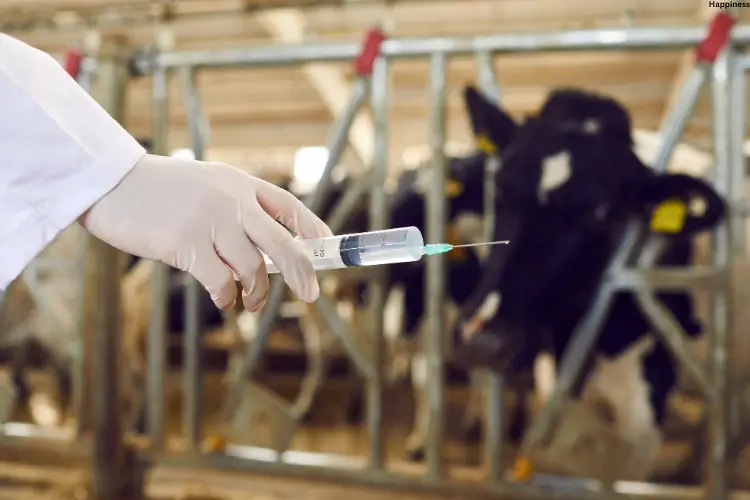
- Breeding Season Management: Establish a well-defined breeding season and optimize breeding practices, including estrus detection and breeding methods.
- Pregnancy Diagnosis and Management: Regularly monitor the pregnancy status of your herd and provide appropriate care for pregnant cows.
- Calving Management: Prepare for and manage the calving process to ensure the health and survival of both the cow and the calf.
- Reproductive Performance Evaluation: Continuously monitor and analyze your herd’s reproductive metrics to identify areas for improvement and make informed management decisions.
- Utilization of Reproductive Technologies: Consider incorporating relevant reproductive technologies, such as estrus synchronization, artificial insemination, or embryo transfer, to enhance your herd’s reproductive performance.
By implementing a comprehensive reproductive management plan that addresses these key elements, you can optimize the reproductive efficiency of your cow herd and achieve your production and profitability goals.
Conclusion
Effective reproductive management is the foundation of a successful and sustainable cow-calf operation. By understanding the reproductive cycle of cows, implementing proven management strategies, and utilizing relevant reproductive technologies, you can maximize the productivity and profitability of your herd.
Continuous evaluation and refinement of your reproductive management plan are essential to adapt to changing environmental, genetic, and market conditions. By prioritizing reproductive efficiency, you can ensure the long-term viability and success of your cow-calf enterprise.
Table: Reproductive Performance Metrics
| Metric | Description |
|---|---|
| Calving Rate | Percentage of cows that calve each year |
| Pregnancy Rate | Percentage of cows that become pregnant during the breeding season |
| Calf Crop Percentage | Percentage of calves born relative to the number of cows exposed to breeding |
| Calving Interval | Average number of days between consecutive calvings |
Additional Resources:
1.Utilizing Sexed Semen Technology for Precision Cattle Breeding: Advancements in Bovine Genetics
2.Bull Breeding Behaviors and Habits
3.An In-Depth Look at Aussie Red Cattle: The Complete Breed Profile
4.The Essential Calving Toolkit: Preparing with a Complete Supplies Checklist
5.Cattle Vaccine Types and Uses: Protecting Your Herd’s Health

